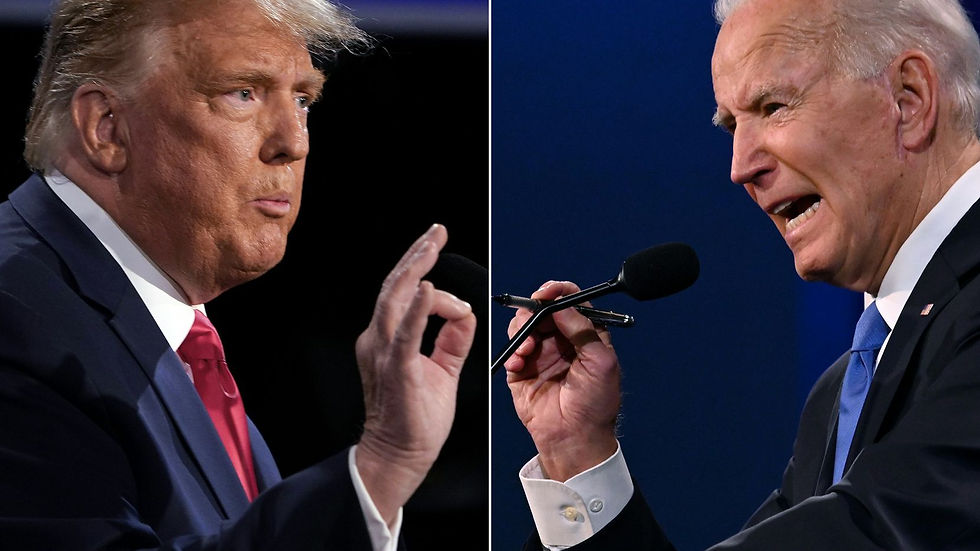'A House Divided': A Look at Political Polarization in the United States.
- charlottenoeljones
- Oct 25, 2021
- 3 min read

Extreme political beliefs have become common around the globe recently. In Europe for example, almost 30% of voters are turning to far right or far left parties like the AfD in Germany or the French communist party. Currently, the United States is facing extreme political polarization that is destroying how liberals and conservatives operate in their day to day lives. In fact, typical democrats are 92% more liberal than republicans, and republicans are 94% more conservative than liberals (Doherty 2014). This blog post will examine the characteristics of polarization, the rise in polarization as a side effect of social media, and possible solutions.

Now, what political party you are registered affects your personal identity. A democrat will shop at wholefoods, buy fair trade coffee, drive a Prius, and identify as an atheist. Conversely, a conservative will drive a Ford, buy ‘Made in America’ pencils for back-to-school session, and put an American flag out on their front lawn. Now, a vote for the opposite party is a personal attack. In fact, a study called ‘Lethal Mass Partisanship’ found in 2019, 60% of democrats and republicans believe the other party is a threat to the country, and 18% of democrats and 13% of republicans agree violence is appropriate if their party loses a presidential election (Kalmoe & Mason, 2019). Moreover, people with fixed world views are more likely to be polarized because they are confident their beliefs are right and are less likely to consider other opinions. Moreover, this polarization is causing people to move into communities with similar voters (Hetherington& Weiler 2018). This is seemingly rational because people always want to be in a place where they feel protected from outside threats and can preserve themselves (Psych of Tech Institute, 2020).

The increase in polarization is mainly because we live in a digital world. Our lives are dominated by social media, and thus the algorithms built into platforms decide what news we see. Because outrage media gets more attention, algorithms push more polarizing news to get more clicks (Crockett 2017) Essentially, “news is being shaped for voters.” This news creates ‘supernormal stimuli’, or emotions that would not be felt without an extreme trigger like social media. Also, the 'like' and 'retweet' functions can help spread dangerous and one-sided news, ideas, and messages to likeminded people. (Psych of Tech Institute, 2020).
A solution to fix polarization is sharing meaningful opposite viewpoints with the other side. When polarized people are introduced to opposite views, they shut down and become defensive. In a study done, democrat and conservative twitter users were exposed to a bot that showed them news related to the opposite political party. After taking the required surveys each week, the participators had more and more negative views on the other party the longer the experiment went on (Bail et al. 2018). However, to get people to break their bubbles, they need to understand alternative views exist, and can offer intelligent and meaningful insights. Moreover, algorithms need to be improved and bots need to be removed from sites like twitter to prevent spam (Psych of Tech Institute 2020).
Bibliography
Doherty, C. (2014 June 12). 7 Things to Know About Polarization in America. Pew Research Center. https://www.pewresearch.org/fact-tank/2014/06/12/7-things-to-know-about-polarization-in-america/
Psych of Tech Institute. (2020). How Social Media Divides Us. YouTube. https://www.youtube.com/watch?v=sPcFmfa0qFU
Kalmoe, N., & Mason, L. (2019). Lethal Mass Partisanship. Retrieved October 25, 2021 fromhttps://www.dannyhayes.org/uploads/6/9/8/5/69858539/kalmoe___mason_ncapsa_2019_-_lethal_partisanship_-_final_lmedit.pdf
Crockett, M.J. Moral outrage in the digital age. Nat Hum Behav 1, 769–771 (2017). https://doi.org/10.1038/s41562-017-0213-3
Hetherington, M., & Weiler, J. (2018). Prius or pickup?: How the answers to four simple questions explain America’s great divide. Houghton Mifflin Harcourt. Chapter 3: Worlds Apart
Bail et al. (2018). Exposure to opposing views on social media can increase political . Retrieved October 25, 2021, from https://www.pnas.org/content/pnas/115/37/9216.full.pdf



Comments